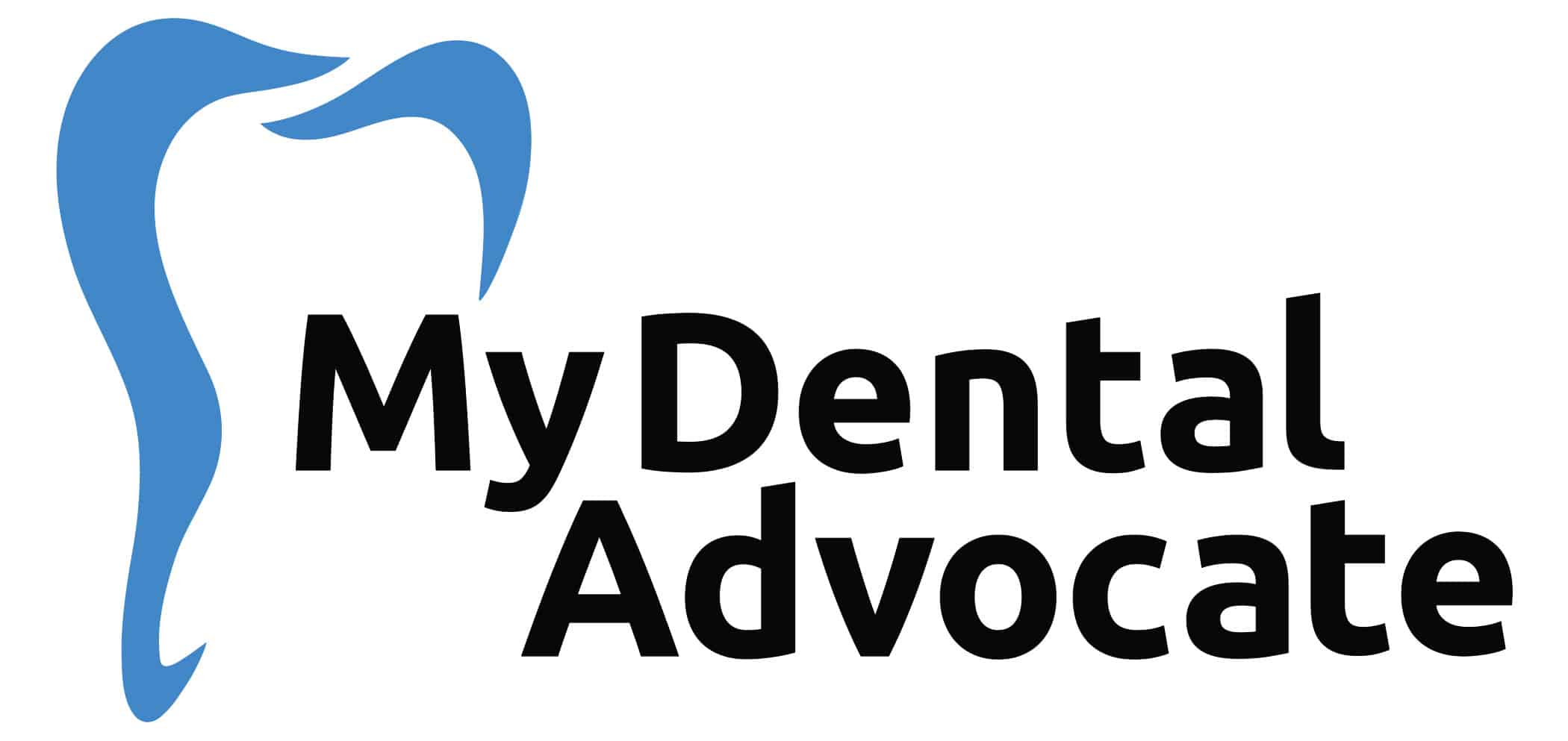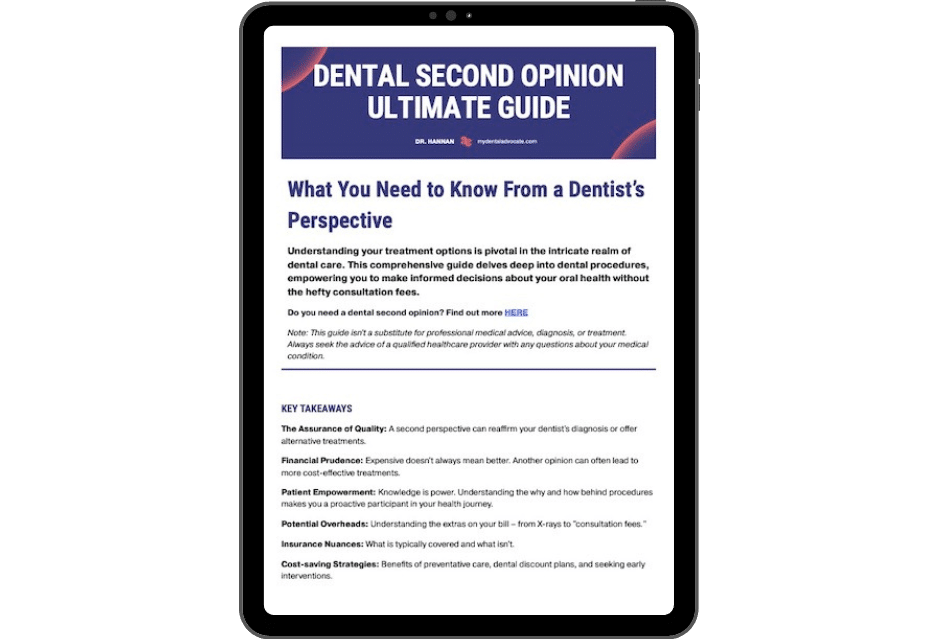How to Fix A Cavity (Treatment Solutions & Costs 2024)
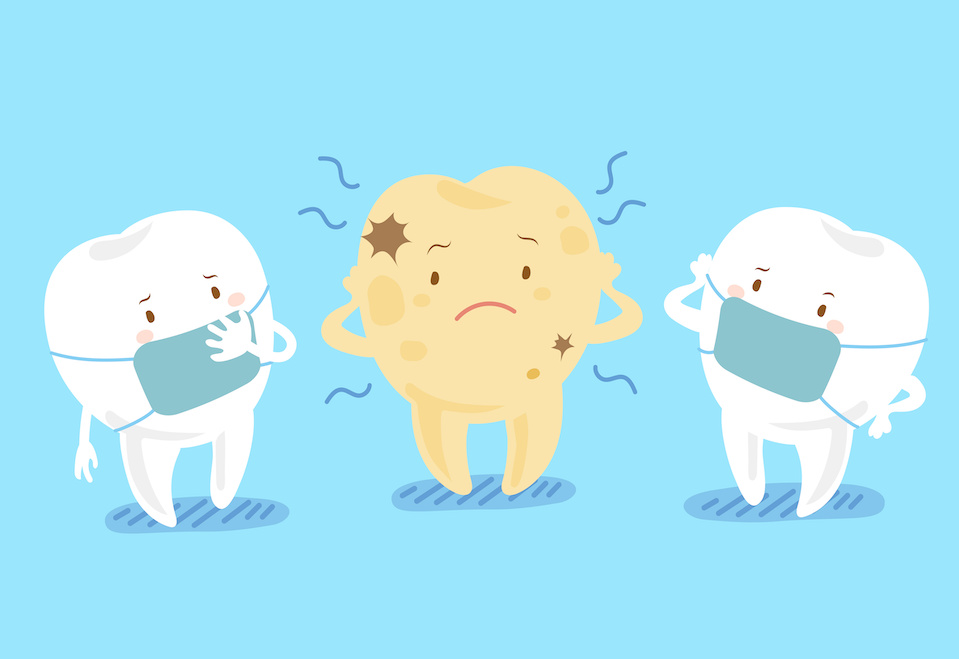
Did you know that 9 out of 10 adults have had a cavity, and one in six adults have untreated cavities?
Cavities are a prevalent dental problem that can occur in any teeth – regardless of how well you take care of them.
If you have a cavity, don’t worry – plenty of treatment solutions are available, and the cost will vary depending on your dentist’s approach.
In this blog post, we’ll discuss how to reverse a cavity, the different types of treatments available for fixing cavities, as well as the associated costs.
Need Dental Advice? Ask Dr. Hannan!
What Is a Cavity?
A cavity, also known as tooth decay, is a hole in your teeth.
Cavities are caused by the buildup of plaque, a sticky film of bacteria that constantly forms on your teeth.
Plaque produces acid that attacks the tooth enamel, causing it to break down and create a cavity.
If left untreated, cavities can become more extensive and lead to pain and infection. In severe cases, they can even cause teeth to fall out.
Cavities are one of the most common dental problems but are also preventable. With proper oral hygiene and regular dental visits, you can help keep cavities at bay.
Cavity Signs & Symptoms
The most common symptom of a cavity is tooth pain which occurs when tooth decay breaks through the hard outer layer of the tooth (enamel) and reaches the softer second layer (dentin).
The inner layer (pulp) houses blood vessels and nerves that extend into the dentin.
Recommended Reading: What Does a Cavity Look Like? (20 Pictures)
Cavities are one of the most common dental problems but are also preventable.
With proper oral hygiene and regular dental visits, you can help keep cavities at bay.
Common Signs & Symptoms
- Pain when you bite down
- Pain when you eat hot, cold, or sweet foods
- Dark spots on your tooth
- Sensitive teeth
- Spontaneous pain
- Pain that wakes you up during the night
Cavity Treatment Solutions (In-Office)
Many people think the only way to fix a cavity is to go to the dentist and have a filling.
However, you can repair cavities at home. One way to fix a cavity is by routinely using toothpaste that has fluoride in it.
Fluoride helps prevent cavities from forming in the first place, so it can be helpful to use toothpaste that contains fluoride even after you have a cavity.
If you have a cavity-causing you pain, you may need to have a dentist fill it. However, if the cavity is not causing you pain, you may be able to reverse the cavity at home with one of the methods described below.
How to fix a cavity in the front tooth?
If you have a cavity in your front tooth, you may be concerned about the appearance of your smile.
However, there are several treatment options available that can help to restore the function and appearance of your tooth.
Treatment Options
- Filling: An affordable option that requires minimal tooth structure removal and can last years. It prevents further decay and restores tooth strength.
- Veneer: Porcelain veneers, bonded to the tooth’s front, can hide stains, chips, and imperfections. They’re usually more costly and not typically covered by insurance.
- Crown: Ideal for extensive cavities, a crown encases the tooth, providing strength and protection. Matching a crown to the adjacent tooth can be tricky, so crowning both front teeth might be suggested.
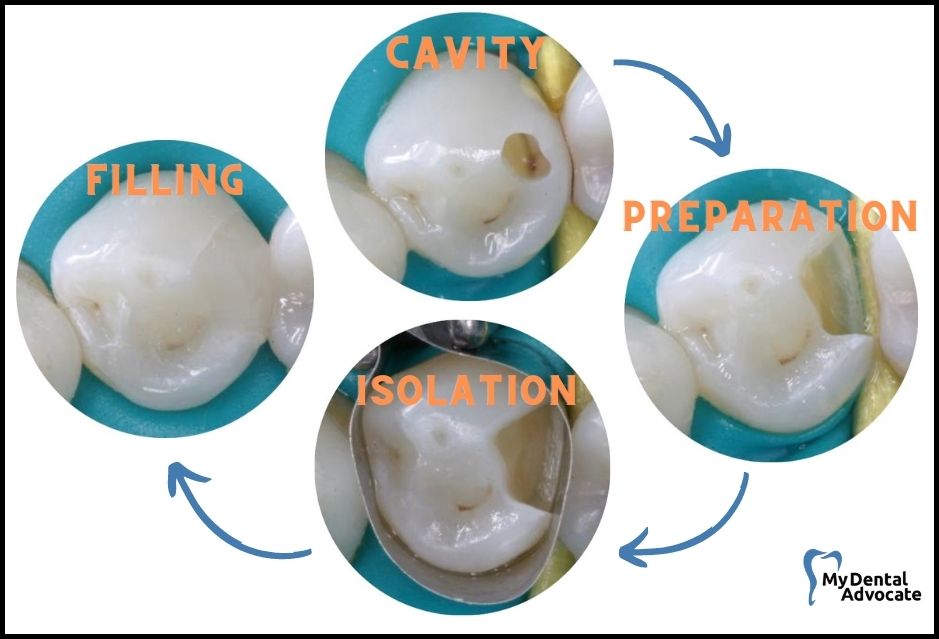
How to Fix a Cavity Between Teeth?
Most cavities form between teeth because cleaning is the most challenging area.
Brushing alone will not remove the harmful bacteria lodged between teeth. Flossing or using a Waterpik are the best ways to clean between teeth because they physically remove the cavity-causing bacteria.
Flossing is preferred; however, using a Waterpik is recommended if you have significant gaps between your teeth.
Chances are, if you have a cavity between your teeth, you’ll need to see a dentist to fill it, as it is more challenging to remineralize (heal) than a cavity on a smooth tooth surface.
Cavity Treatment Solutions (At Home)
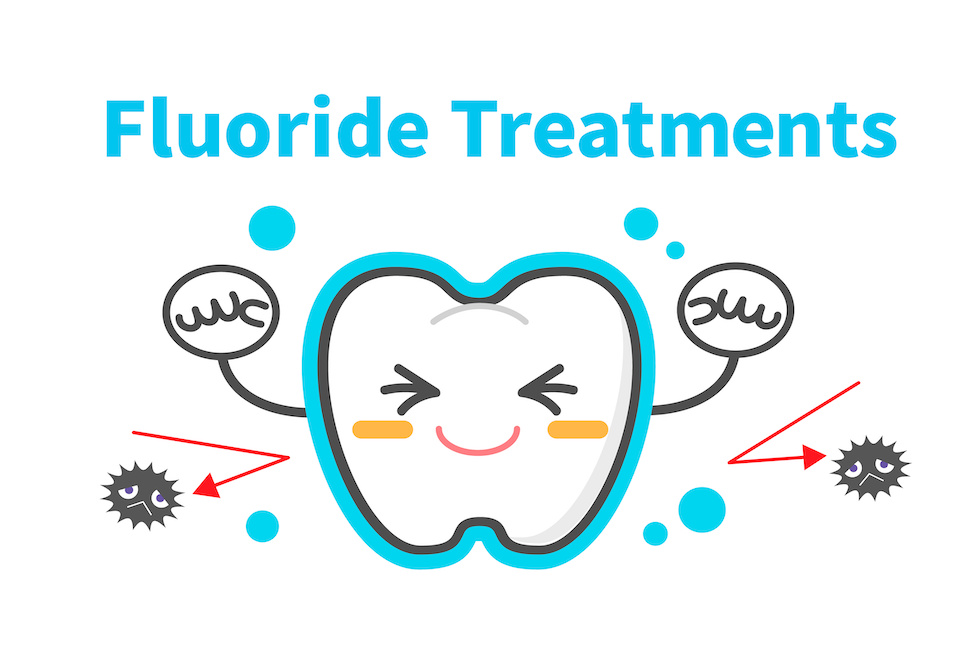
Many options are available if you’re looking for ways to fix a cavity without dental treatment.
However, some options will require an initial evaluation with the dentist.
Best Treatment Solutions
- Nightly fluoride trays (dentist-required)
- Prescription fluoride toothpaste (dentist-required)
- Topical fluoride varnish (dentist-required)
- Over-the-counter fluoride toothpaste (MI Paste)
- Oral health improvement
Recommended Reading: Can You Reverse a Cavity? (5 Simple Steps)
What is MI Paste?
MI Paste and MI Paste Plus are the only over-the-counter professional products that contain the active ingredient RECALDENT, a unique milk-derived protein that releases calcium, phosphate, and fluoride (only MI Paste Plus).
These minerals repair weekend enamel that has been damaged by harmful bacteria acid.
Both products are available in five delicious flavors. MI Paste is fluoride-free, and MI Paste Plus contains a patented form of fluoride (900 ppm).
Recommended Reading: What is MI Paste? (How it Heals Cavities)
What Is Prescription Fluoride Toothpaste?
Your dentist can only prescribe prescription fluoride toothpaste and contains a higher fluoride concentration (5000 ppm).
This maximum-strength toothpaste reduces cavity risk by 42%, whereas over-the-counter fluoride toothpaste reduces cavity risk by 23%.
Key Benefits
- Reduces risk for tooth decay
- Decrease tooth sensitivity
- Prevent cavities from growing
- Remineralize (heals) small cavities
- Minimally abrasive toothpaste
Best Patients
- Patients with braces
- Patients with active tooth decay
- Patients with dental hypersensitivity
- Patients with high cavity risk (prone to tooth decay)
- Patients with dry mouth
- Patients with exposed root surfaces
- Patients with many fillings and crowns
Can You Reverse a Cavity?
If the cavity is in the enamel layer ONLY, it can likely be reversed and healed (also referred to as remineralized) because the tooth can replace minerals that have been lost.
However, if the cavity has reached the dentin layer (second layer), it’s much harder to treat and heal naturally. In this case, you’ll likely need to see a dentist and fill the cavity.
How long does it take to reverse a cavity?
The time it takes to reverse a cavity naturally depends on its depth.
For example, if the cavity is in the superficial enamel layer only, it can often be reversed quickly (within a few weeks). However, if the cavity has reached the junction with the dentin layer, it will take longer to reverse (several months to a year).
Other factors to consider include diet, oral health, frequency of sugar consumption, frequency of dental visits, and genetics.
Recommended Reading: 12 Cavity Risk Factors (Best Treatment)
Can cavities go away with brushing?
Cavities cannot go away with brushing alone, but you can prevent them from worsening.
Brushing removes the plaque and bacteria that cause cavities and helps remove the food particles that contribute to them. However, once a cavity has formed and entered the second tooth layer (dentin), a dentist can only remove it.
Can salt remove a cavity?
No, salt cannot remove a cavity.
However, it can help prevent cavities by killing the bacteria that cause them. Salt also helps to remove the food particles that contribute to cavities.
To use salt as a cavity prevention method, add a teaspoon of salt to a cup of warm water and swish it around your mouth for two minutes. Then, spit it out and rinse with water.
How long can a cavity go untreated?
Cavities can go untreated for a long time but eventually become painful.
The longer a cavity is left untreated, the more damage it will do to the tooth. If the cavity damages most of the tooth structure, the tooth may need to be extracted (pulled out).
Some cavities progress faster than others for reasons including genetics, diet, oral health, and frequency of sugar consumption.
What Does a Cavity Look Like?
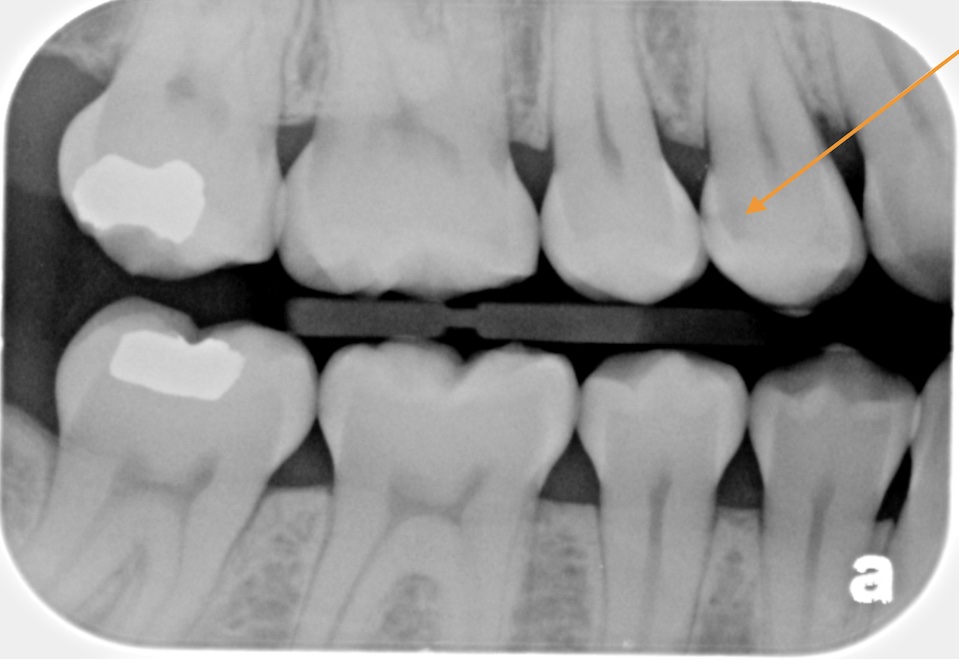
Cavities are often small, dark spots on teeth. In the early stages, a cavity may not be visible to the naked eye and may only be detected through dental x-rays.
However, cavities will become more prominent and apparent as cavities progress.
Cavities routinely form on the chewing surface of the teeth in the grooves and pits.
This area is difficult to clean and will begin to harbor bacteria. Stains in the teeth will also be an early sign of tooth decay.
Recommended Reading: What Does a Cavity Look Like? (20 Pictures)
What does a cavity look like on an x-ray?
On an x-ray, a cavity will look like a dark shadow. This occurs because the cavity eliminates much of the healthy tooth structure allowing the x-ray beam to pass through and emit a dark shadow.
The larger the cavity, the easier it is to spot it on the x-ray.
Digital x-rays allow the clinician to utilize tools to evaluate the x-ray, including magnification, sharpness control, and color changes.
Related: Learn more about Dental X-rays
Cavity Treatment Costs
The cost of filling a cavity depends on the size, location, and type of filling material used.
For example, the average price of a silver amalgam filling is $50-$150, whereas the average cost of a composite resin filling is $90-$250. Gold or porcelain fillings are usually more expensive, costing $500-$4,000 per tooth.
A veneer or crown will be indicated if the cavity extends across more than half of the tooth or causes an irreversible stain, a veneer or crown will be indicated.
The average cost of veneers is $700-$2000, whereas the average price of crowns is $500-$3000.
The cost of the veneers ranges in price due to porcelain/ceramic material differences, practice location in the country, and dentist expertise. Cosmetic dentists specialize in esthetic treatments such as veneers and crowns, so they often charge more for their services.
Crowns range in price due to crown material choice, practice location in the country, and insurance coverage. Porcelain-fused-to-metal (PFM) crowns are often the cheapest material, whereas zirconia or porcelain/ceramic crowns are the most expensive.
The cost difference is also due to differences in material strength, lab cost, and same-day crown treatments.
How to Prevent Cavities
Preventing tooth decay can save you time in the dentist’s chair, hard-earned money, and unnecessary pain.
Recommendations
Step 1: Brush Twice Daily
Brushing removes food particles and plaque, which can turn into calculus and cause cavities. Brush at least twice a day to maintain oral health.
Step 2: Use Fluoride Toothpaste
Fluoride strengthens enamel and prevents cavities. It’s crucial for remineralizing teeth and stopping cavity progression, so use fluoride toothpaste.
Step 3: Floss Daily
Flossing gets rid of plaque and bacteria between teeth and under the gumline, areas your toothbrush can’t reach. This helps prevent cavities in these spots.
Step 4: Regular Dental Visits
Seeing your dentist regularly helps catch early signs of decay, plaque buildup, or gum inflammation. Professional cleanings and checkups are key.
Step 5: Balanced Diet, Limit Sugary Foods
Sugary and acidic foods harm teeth. Limit these and maintain a balanced diet with plenty of water for healthier teeth.
Recommended Reading: 10 Simple Steps to Prevent Cavities (Dentist’s Perspective)
My Experience & Expertise
Cavities can be a real pain; however, many treatment solutions exist to fix this common problem.
Also, there are many ways to prevent cavities before they become a pain in your mouth and in your wallet. Preventing cavities is the best plan of action possible.
Need a second opinion? We can help! Learn more. Knowledge is power when cultivating healthy dental habits. The more informed you are, the better positioned you’ll be to prevent avoidable and potentially costly dental procedures for you and your family. Watch for future blog posts, where we’ll continue sharing important information, product reviews and practical advice!
Sources
- Centers for Disease Control and Prevention (CDC)
- Nordstrom, A. High-fluoride Toothpaste (5000 ppm) in Caries Prevention. University of Gothenburg, 2011.
- American Dental Association (ADA)

About the Author
Dr. Matthew Hannan, also known as “Dr. Advocate,” is a board-certified dentist on a mission to provide accurate dental patient education. He attended Baylor University before completing dental school at UT Health San Antonio School of Dentistry. He now lives in Arizona with his beautiful wife and 4 kids. Dr. Hannan believes everyone should access easy-to-read dental resources with relevant, up-to-date dental research and insight to improve their oral health.

Connect with Dr. Hannan!

Top 10 Habits for Improved Oral Health 2024
Have you ever visited the dentist anticipating an excellent report, only to question how much you floss? That would be a sinking feeling, especially if you thought you were doing a great job brushing and flossing. It may take some…
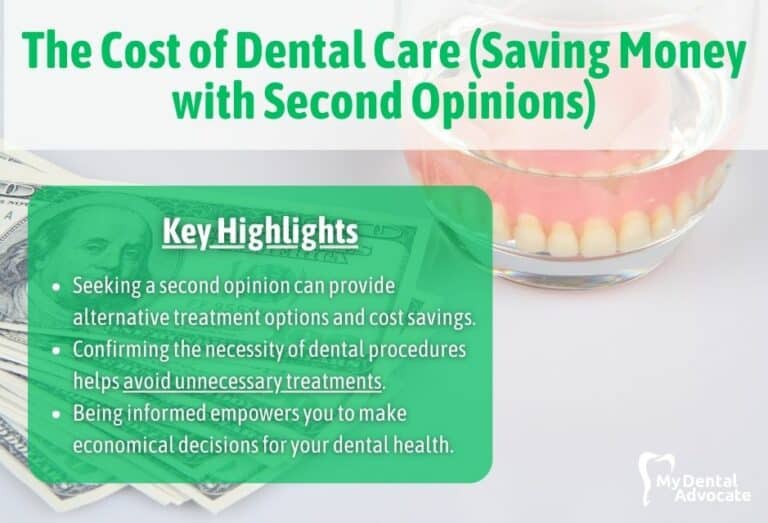
The Cost of Dental Care (Saving Money with Second Opinions)
Navigating the realm of dental care can often feel overwhelming. This is especially true when it comes to understanding the costs involved. Dental treatments can range from basic care to intricate procedures, each with its own price tag. Understanding how second opinions can impact dental care costs is an empowering step toward making informed and economical healthcare decisions.
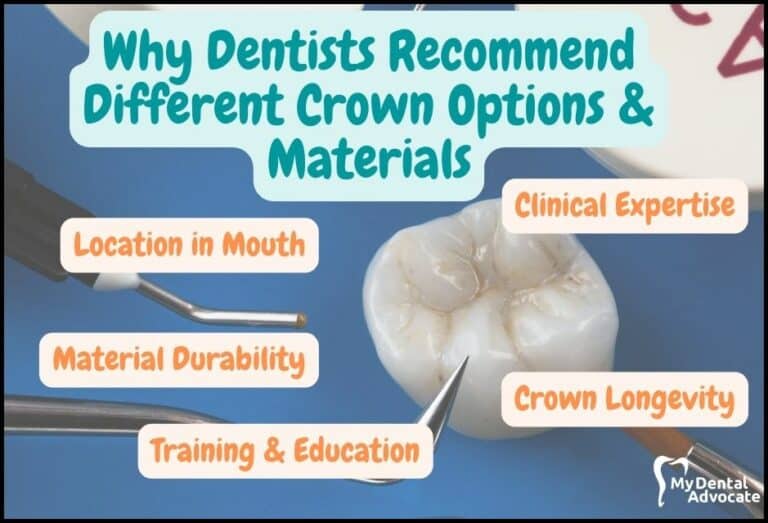
Why Dentists Recommend Different Crown Options & Materials
After years of training, education and clinical practice, there are many reasons why dentists have varying opinions. For example, I’ve encountered many patients confused and frustrated with their previous dentist’s treatment plan. Our diagnosis and recommended treatment plan…
Gain Clarity with Our FREE Second Opinion Guide
Receive clear, expert second opinions online within 48 hours. Start today!
Product Reviews
Our 250+ dental product reviews (and counting), curated by an experienced dentist, are the most comprehensive online.
Toothbrush Genie
State-of-the-art chatbot designed to help you discover your perfect toothbrush in just a few simple steps!
Cavity Risk Assessment
Cutting-edge digital tool designed to evaluate your individual cavity risk based on your responses to a series of questions.
Gum Disease Assessment
Discover your gum disease risk with our quick and engaging 6-question assessment!
